Trump falls on sword for Putin’s treaty violation
By Matt Korda, Hans M. Kristensen | October 29, 2018
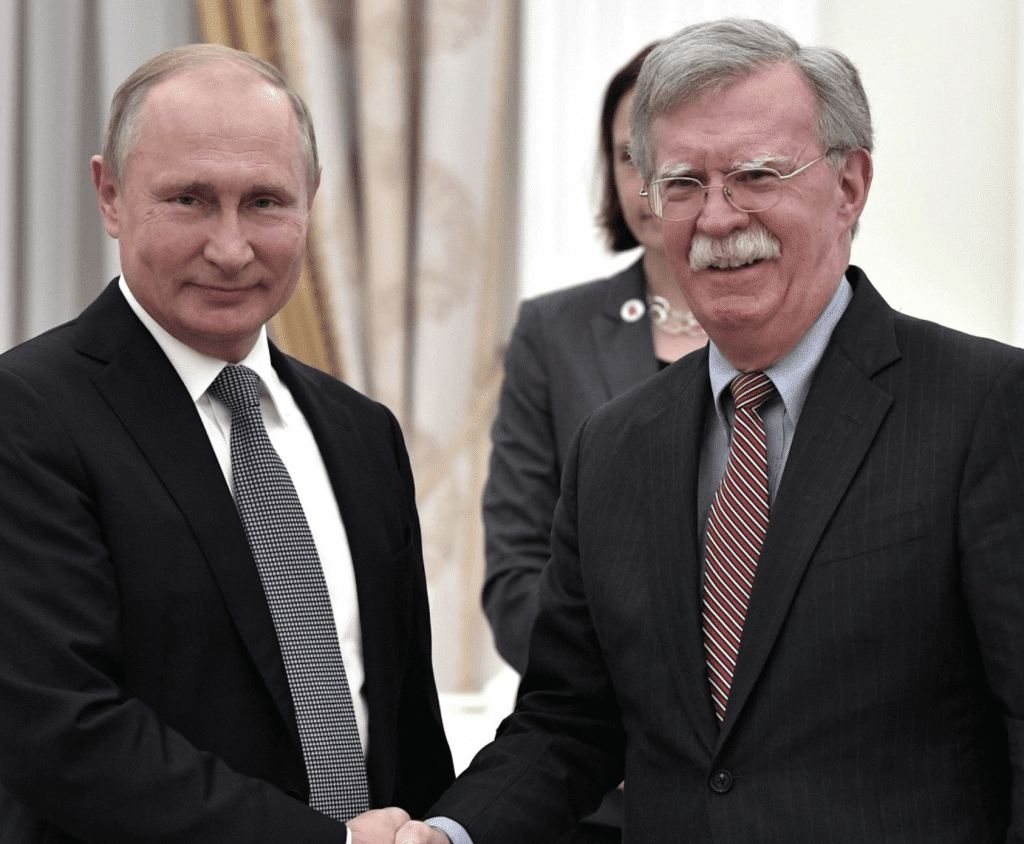
As part of a concerted campaign to withdraw from any “unfair” international agreements—from the Paris climate accord to the Universal Postal Union—President Donald Trump announced last week that the United States will also withdraw from the 1987 Intermediate-range Nuclear Forces (INF) Treaty, a landmark arms control agreement that banned and eliminated all US and Russian ground-launched missiles with ranges between 500 and 5,500 kilometers.
Citing concerns over Russian non-compliance with the treaty, Trump stated that “Russia has violated the agreement. They’ve been violating it for many years. We’re the ones that have stayed in the agreement, and we’ve honored the agreement. Russia has not, unfortunately, honored the agreement.”
The US government has since 2014 publicly accused Russia of violating the treaty by testing, producing, and deploying a ground-launched cruise missile with a range greater than 500 km. The U.S. government initially refused to name the missile, but after it did so in December 2017, the Kremlin finally acknowledged that the 9M729 (which NATO calls the SSC-8) does exist, but that it “fully complies with the treaty’s requirements.” The United States claims that the missile has been flight tested to “well into the ranges” prohibited by the INF treaty.
Russia’s violation aside, Trump’s response—to pull out of the treaty—makes the United States needlessly complicit in its demise and frees Russia from both the responsibility and pressure to return to compliance. Moreover, scuttling the treaty contradicts key US policy documents and statements issued during the past eight months.
Withdrawal establishes a false moral equivalency. President Putin has sought to establish a moral equivalency between Russia and the United States on the INF issue for several years. Only a month after the State Department first officially accused Russia of violation in 2014, the Russian Foreign Ministry countered by accusing the United States of three separate violations of the same treaty. None of these accusations hold up under evidential scrutiny, however, and only one of them—that US missile defense launchers based in Europe could be repurposed to launch intermediate-range, nuclear-armed missiles—is even worth acknowledging.
After the Trump administration accused Russia of being in violation of other legal and political commitments, including the Open Skies Treaty, Presidential Nuclear Initiatives, and the Budapest Memorandum, the Russian Foreign Ministry issued another series of counter-accusations. This time, the Kremlin criticized the United States for undermining 11 different international agreements, including the Biological and Chemical Weapons Conventions, the Nuclear Non-Proliferation Treaty, the Open Skies Treaty—and, of course, the INF Treaty.
By lodging these counter-accusations against the United States, President Putin is actively attempting to obfuscate the truth and establish an equivalency between Russia and the United States—and to some extent, it seems to be working. At the beginning of 2018, the Washington Post editorial board published an article entitled “Russia and the United States are wrecking a landmark treaty.” The piece squarely placed the blame for the “breakdown of the INF Treaty and the start of a new missile race” on both sides in equal measure.
Until Trump’s announcement to withdraw from the treaty, this headline could be considered unfair. Now it seems fitting.
The Russians could have easily walked away from the INF Treaty years ago, in the same way that the United States walked away from the Anti-Ballistic Missile (ABM) Treaty in 2002—by declaring that it was outdated and no longer served their strategic interests. During the George W. Bush administration, the Russian government repeatedly said that the treaty was unfair and that it should be broadened to include other countries with INF weapons. Instead of walking away from INF, however, the Russians decided to stay in the treaty, but allowed it to atrophy by violating it and then denying that they had done so. In this manner, they hoped to avoid the blame for killing a landmark treaty of this magnitude.
By pulling out of INF, the Trump administration has willingly fallen on its sword for Putin, needlessly choosing to accept a share of the blame. Indeed, if the United States formally pulls out, Russia could potentially choose not to follow, instead claiming that it will continue to adhere to the treaty’s terms, thereby painting the United States as the irresponsible one. Given the corrosive effect of Trump’s behavior on international confidence in the United States, such a strategy could serve’s Putin’s goal of seeking to split the NATO alliance and increase Russia’s status. Seeking to drive a deeper wedge into the alliance, Putin has recently explicitly threatened to target any European countries that would accept deployment of US intermediate-range nuclear missiles on their territory.
Withdrawal puts the U.S. in conflict with its own policies. Trump’s decision to withdraw is also noteworthy because it contradicts recent key US policy documents and statements. First among these is the Integrated Strategy announced in December 2017, the main tenets of which were later expanded in the Nuclear Posture Review (NPR) published in February. Both documents listed three categories of responses intended to pressure Russia back into INF compliance, all of which would be treaty compliant and were intended to preserve the treaty:
- Diplomatic Measures: The United States continues to seek a diplomatic resolution through all viable channels, including the INF’s Special Verification Commission. Allies have emphasized that a situation whereby the United States and other parties are abiding by the treaty, and Russia were not, would be a grave and urgent concern.
- Economic Measures: The United States has sanctioned Russian companies involved in the development and manufacture of Russia’s prohibited cruise missile system.
- Military Measures: The United States is commencing INF Treaty-compliant research and development by reviewing military concepts and options for conventional, ground-launched, intermediate-range missile systems. (Emphasis added.)
Even in its recommendation to pursue development of a new nuclear sea-launched cruise missile, the NPR underscored that the weapon would be “an INF-Treaty compliant response to Russia’s continuing Treaty violation.” (Emphasis added.) If the Trump administration is already willing to abandon this critical section of the NPR—only eight months after its publication—how can allies and adversaries be certain which other parts of the NPR still count?
Trump’s decision to withdraw from the INF also contradicts several prominent recent policy statements. Not even a month ago, US NATO Ambassador Kay Bailey Hutchison reassured NATO and the international community that:
[t]he United States does not want to withdraw from the treaty. We certainly don’t intend to violate the treaty. So we are asking our allies for their suggestions on a way forward that would bring Russia into compliance, because that is our goal. Russia in compliance. We ask Russia to come into compliance because America is being very careful to stay in compliance. But there will come a point in the future in which America will determine that it has to move forward with a development phase that is not allowed by the treaty right now. That’s not imminent, but we are laying down the markers so that our allies will help us bring Russia to the table. (Emphasis added.)
Instead of consulting with the allies, Trump boasted that “I don’t have to speak to them. I’m terminating the agreement.” In doing so, he is contradicting the North Atlantic Council declaration from July, to which every NATO member—including the Trump administration—agreed: “[W]e remain fully committed to the preservation of this landmark arms control treaty.”
Withdrawal is not necessary militarily. So far, the Russian ground-launched cruise missile deployment does not appear to give Russia a military advantage. Joint Chiefs of Staff vice-chairman General Paul Selva stated in 2017: “Given the location of the specific missiles and deployment” of the new launchers, “they don’t gain any advantage in Europe.” NATO targets are already in range of other existing Russian missiles that the Alliance has been defending against for years. But if Trump pulls out and Russia begins to deploy significantly more INF missiles, that situation could change.
It has become popular among some to argue that the decision to withdraw from the INF Treaty has less to do with Russia’s violation than the fact that China is not part of the agreement and has built a considerable arsenal of intermediate-range weapons that allegedly puts the United States at a disadvantage in the Western Pacific. A popular reference for people with that view is the former head of US Pacific Command, Adm. Harry Harris, who last year told Congress: that “over 90 percent” of China’s land-based missile force falls within the INF range so an “INF Treaty that limit[s] our ability to counter Chinese and other countries’ cruise missiles, land-based missiles, I think is problematic.” The jury is still out on what the implications of the Chinese development are—much less what the best US response is. But even Harris said: “I would never advocate unilateral withdrawing from the treaty because of the nuclear limitation part of it.”
So far, the US military has chosen to build its response to China’s ambitious missile program around sea-based Tomahawks and air-based JASSM-ERs, neither of which is prohibited by the INF Treaty or constrained by geography. Other than Guam, the United States doesn’t have much territory in the Western Pacific; Guam is 3,000 kilometers from the Chinese coast and even farther from the INF launchers inside China. While military planners can always use more firepower, Gen. Selva rejected Adm. Harris’ concerns by telling Congress that “with respect to whether or not we use the INF Treaty as a reason to say targets inside China might not be held at risk I think is a bridge too far. I believe we can assert that the deployment of missile systems on aircraft and ships allow us to hold those targets at risk.” In fact, he explained in a written response to a member of the Senate Armed Services Committee, “There are no military requirements we cannot currently satisfy due to our compliance with the INF Treaty. While there is a military requirement to prosecute targets at ranges covered by the INF Treaty, those fires do not have to be ground-based.”
Moreover, Japan, one of the key countries the US military would be tasked with defending with INF weapons in the Pacific, stated that withdrawal from the INF would be “undesirable,” and that “[w]e hope that it will be averted.”
Preserve arms control and stability. Overall, we certainly don’t see a need for the United States to withdraw from the INF Treaty at this point. Doing so does nothing to coax or coerce Russia back into compliance, which should be the ultimate goal. In fact, it removes the legal and political pressure on Russia and offers the Kremlin a free hand to develop and deploy INF systems in larger numbers and without treaty constraints. Nor does it appear to be critical to address China’s intermediate-range forces.
And yet, Trump’s decision to withdraw does not come as a surprise. Just as the Putin regime has established a pattern of violating international agreements, the Trump administration has established a similar pattern of withdrawing from them; the administration is quickly becoming known as the treaty killer. In just under two years, President Trump has pulled out of more than a dozen international commitments, citing an imperative to reclaim America’s sovereignty. Given the INF Treaty’s critical role as a stabilizing factor for Europe’s security, America’s NATO allies will not take kindly to Trump’s unilateralism. As Richard Burt, the former US chief negotiator for the Strategic Arms Reduction Treaty and one of the negotiators of INF, noted, “[t]he overwhelming view of people, not only in the United States and Russia but around the world, will be that it was the United States that killed this treaty.”
Looking ahead, Trump’s willingness to scrap mutually beneficial agreements in order to appear tough and to pander to his domestic base does not bode well for the international order. After the United States pulls out of the INF Treaty, presumably the next to go would be the New Strategic Arms Reduction Treaty (New START)—soon the only remaining US-Russia arms control agreement that regulates nuclear forces. So far, Trump does not seem interested in extending it past its expiration date in 2021, much less negotiating another agreement to reduce nuclear forces further. Arms control agreements are not end goals in and of themselves; rather, they are a set of important tools that serve to improve national and international security. As such, it is essential that the Trump administration internalizes that ethos and retains these two critical arms control agreements for the sake of alliance cohesion, mutual transparency, stability, and nuclear non-proliferation.
Together, we make the world safer.
The Bulletin elevates expert voices above the noise. But as an independent nonprofit organization, our operations depend on the support of readers like you. Help us continue to deliver quality journalism that holds leaders accountable. Your support of our work at any level is important. In return, we promise our coverage will be understandable, influential, vigilant, solution-oriented, and fair-minded. Together we can make a difference.
Share: [addthis tool="addthis_inline_share_toolbox"]


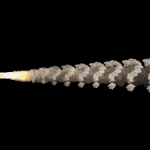
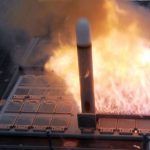

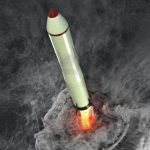

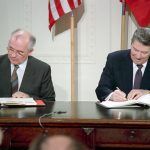








Wait a second. The US accused Russia of violating the treaty as the article makes clear under Obama.
The article then states that Russia says it has not violated the treaty, that the missile n question falls under the parameters of the treaty.
THEN the article goes on to assume that Russia IS in violation – that is, the US is to be believed and Russia not.
What a pathetic excuse for reasoned argument.
The article is also loaded with demonization of Russia and the Putin “regime.” It is not even subtle.
Nato is already in range of many other Russian missiles that the “alliance” could not possibly defend against if they were actually used.